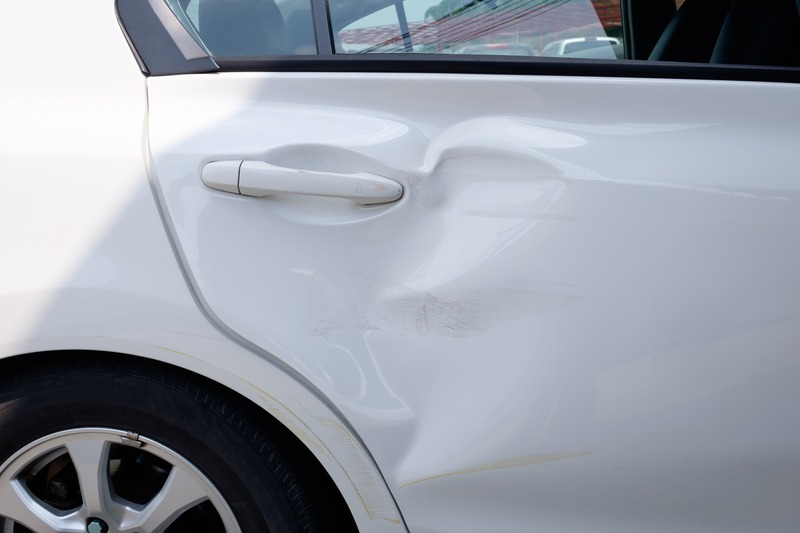Dent repair is a common procedure that many car owners face at one point or another. Whether it’s from a minor fender bender, a hail storm, or a stray shopping cart, dents can be an unsightly nuisance. Fortunately, modern techniques have made dent repair quite efficient, but the time it takes can still vary widely depending on several factors. In this casual yet informative guide, we’ll explore the typical timeframe for dent repairs and what variables might extend or shorten the repair period.
Factors Affecting Dent Repair Time
Before giving a blanket answer to how long dent repair usually takes, it’s essential to understand the factors that influence the process. These factors don’t just affect the time; they also dictate the approach a technician must take to restore your vehicle to its pristine condition.
-
Size and Depth of the Dent: Naturally, small dings are quicker to fix than large, deep dents.
-
Location: Dents on flat surfaces are more accessible and quicker to fix compared to those on edges or contoured areas.
-
Number of Dents: Multiple dents require more time to repair as each one needs to be assessed and treated individually.
-
Type of Repair: Traditional dent repair processes differ in complexity and duration compared to modern approaches like Paintless Dent Repair (PDR).
The Complexity of the Repair
A straightforward dent might take a few hours to repair, while a complex one could extend to several days. When it involves the vehicle’s body and paint work, factors like curing time for fillers and paint must be considered, which add to the overall duration.
PDR Quick Turnaround
Paintless Dent Repair (PDR) service is a game-changer in the world of auto body repairs. This technique is known for its quick turnaround times and often requires no repainting of the vehicle. PDR works best with small to medium-sized dents where the paint surface is still intact. Service providers using PDR can often complete the job in just a few hours as opposed to traditional repair methods, which might take days.
Traditional Dent Repair Timelines
In cases where PDR is not suitable, traditional dent repair methods are employed. These typically involve sanding down the affected area, applying a body filler, and repainting, which can take significantly longer. The drying and curing times for the filler and paint are the primary reasons for the extended repair times.
Day-to-Day Breakdown
-
Assessment and Disassembly: Initial stages such as assessing the damage and, if necessary, disassembly of parts to reach the dent can take from 1 to 3 hours.
-
Body Work: The repair work itself can take anywhere from 3 to 8 hours, depending on the complexity of the dent.
-
Painting and Curing: If repainting is needed, this can take an additional 1 to 3 days for the paint to be applied and cured properly.
Waiting on Parts
Sometimes, dent repair may be part of a larger repair job that requires parts replacement. Ordering and receiving parts can introduce delays. Wait times for parts can vary based on availability, shipping times, and whether OEM (Original Equipment Manufacturer) or aftermarket parts are being used.
Quality of Service Matters
The efficiency and timeline of dent repair also hinge on the expertise and workflow of the repair shop. Experienced technicians using advanced tools can expedite the repair process without compromising on quality.
Expectations for Hail Damage
Hail damage can lead to numerous dents over a car’s surface, which sometimes calls for a specialized approach like Hamilton hail repair. The process of repairing hail damage might last a few days due to the sheer number of dents that typically need to be addressed.
Insurance Companies
The involvement of insurance companies can affect the timeline for dent repair. Claims processing, inspections, and approvals can introduce additional waiting periods that aren’t solely dependent on the physical repair job.
Local Repair Options
For a localized option like car dent repair in Hamilton, vehicle owners might enjoy shorter wait times and more personalized service, which can, in favorable circumstances, reduce the repair duration.
Concise Comparisons and Estimates
When it comes to fixing dents in a vehicle, the time it takes can vary a lot. It depends on the size and complexity of the dent. For smaller dents, a method called Paintless Dent Removal (PDR) is often used, and it’s pretty quick. For bigger or more complicated dents, traditional repair methods are used, and these take longer. Hail damage can involve many small dents and might take several days to repair.
Dent Repair Timing
-
Small Dents (PDR): If a dent is small and simple, PDR can often fix it in 1 to 3 hours. This quick process doesn’t require painting the car afterward.
-
Medium Dents (PDR): Fixing medium-sized dents with PDR might take a few hours to half a day. The time increases with the dent’s size and if it’s in a trickier spot.
-
Large or Complex Dents (Traditional): Large dents, or ones that can’t be fixed with PDR, need traditional repairs. This process can take anywhere from 1 to 3 days because it might involve filling the dent, sanding, and repainting.
Different Scenarios in Dent Repair
Hail damage can be particularly challenging. The car might have lots of dents, and each one needs attention. The time to repair hail damage varies greatly, depending on how many dents there are. In some cases, it could be just a couple of days, but if the car is badly damaged, it might take longer.
Closing Remarks
All things considered, dent repair times vary considerably. Paintless Dent Repair can promise a quick fix for minor dents, and well-equipped shops can efficiently handle complex repairs. While delays are sometimes inevitable, understanding these variables allows for more realistic expectations and planning when facing auto body repairs.





